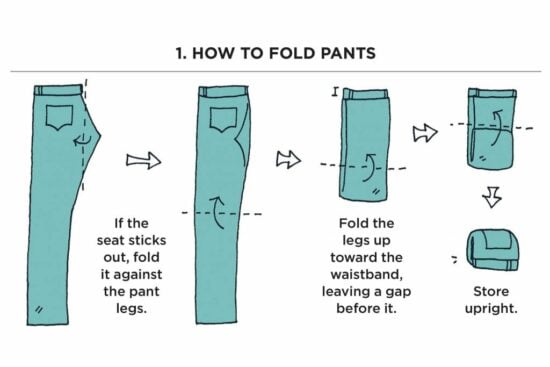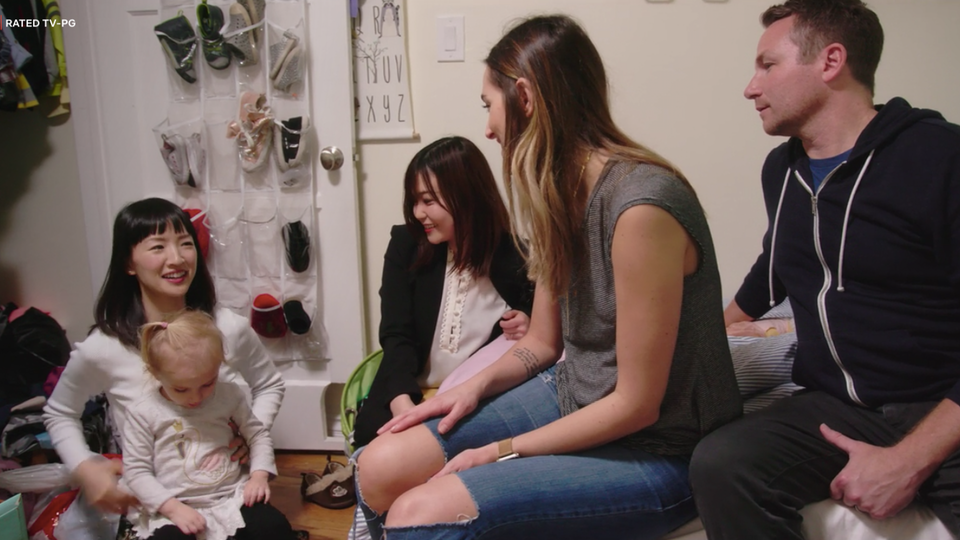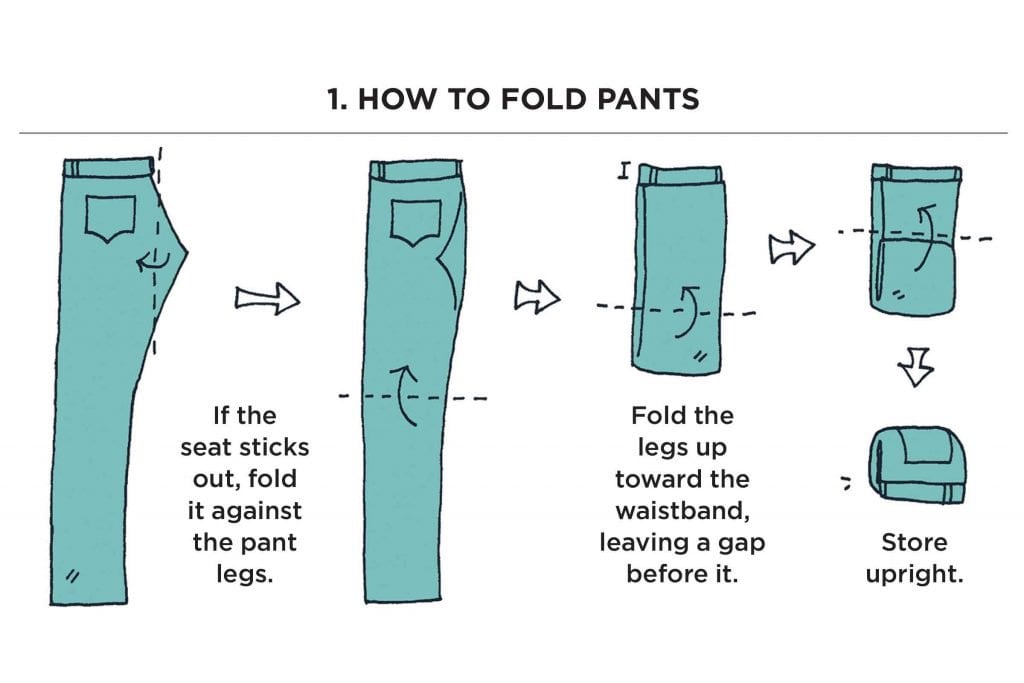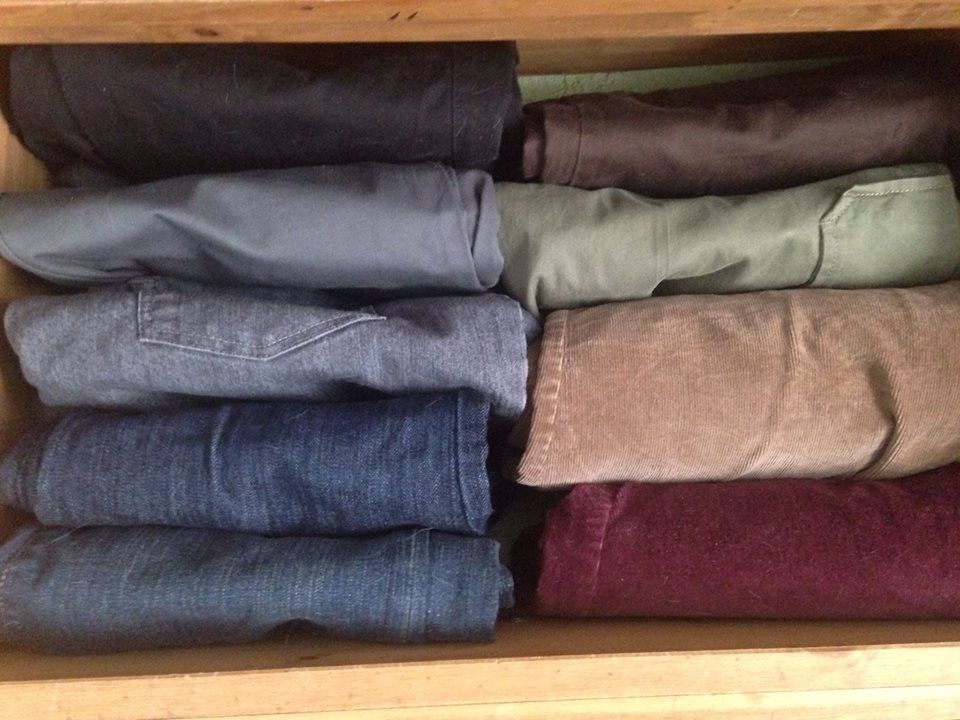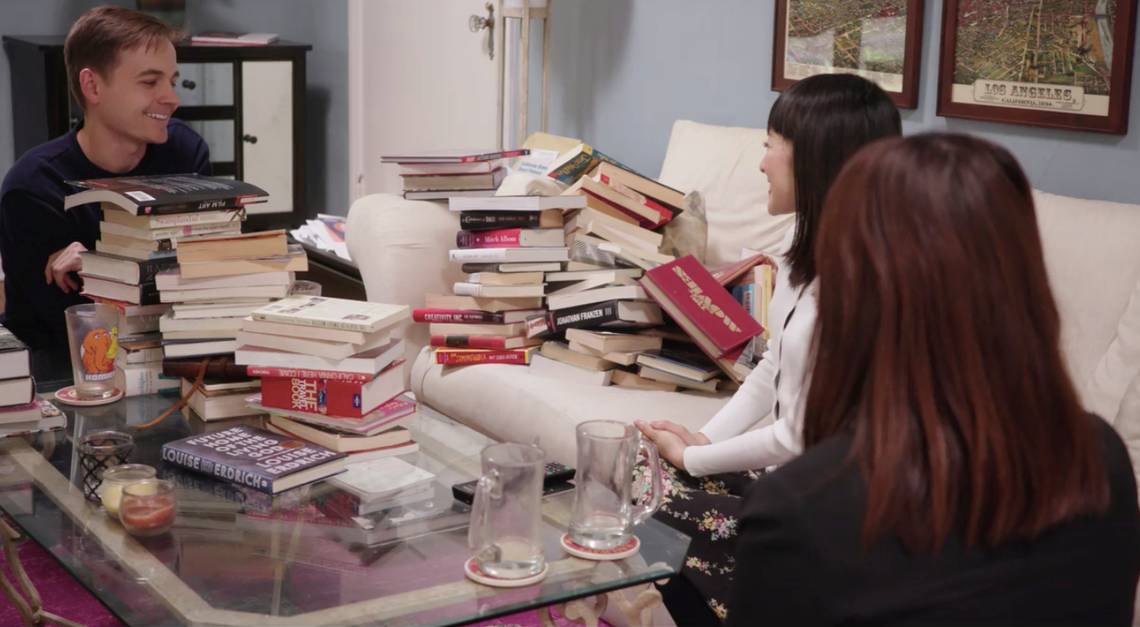Have you ever heard of Marie Kondo? If you haven’t, maybe you’ve heard this decluttering advice: pick up the object and ask yourself if it “sparks joy”. If it does, keep it. If it doesn’t, toss it out.
That entire idea started with Marie Kondo. She burst onto the scene in 2011 with her books, The Life-changing Magic of Tidying and Spark Joy. And now, thanks to Netflix, she’s the star of a new eight-part series called “Tidying up with Marie Kondo.”
As the show is a new cultural sensation, with everyone writing about it from the New Yorker to Uproxx to The Ringer, I decided to binge watch the show and see what all the fuss was about.
Each episode finds Marie in a new household struggling with their own forms of clutter. A young family can’t tidy up or stay organized thanks to young toddlers. An older couple bought too many clothes and had a stack of baseball cards as tall as the ceiling. By the end, each home is tidy, the people are smiling, and the audience can only hope they can maintain their new found lifestyle.
The show feels like a cross between Hoarders and an HGTV home show. There’s no real drama, except for a little bickering between couples, which cleanliness finally solves. Almost everyone in the show feels some sort of relief afterward. They are better parents, others are better couples, and some are more prepared for the life changes like death and birth that have affected their lives.
Still, despite some of the cheesiness, I found myself inspired, entertained, and anxious to clean. Plus, Marie is like the cutest show host ever. I learned some interesting organization tips and new ways of thinking about the home. Here are my five biggest takeaways:
1) Follow the KonMari Method
Marie Kondo follows the same order every time when she starts organizing a house. She calls it the KonMari method. The process is this: clothing, books, paper (as in documents, letters, etc), komono (kitchen, bathroom, garage, miscellaneous items), and finally sentimental items.
There’s a lot of logic to this order. Clothes are generally the easiest to get rid of. Many people store ill-fitting or old clothes that they’re happy to get rid of. Once they’re comfortable with the process, then they can move to harder objects like books. Finally, by ending with sentimental items, the people are so good at understanding the principle of “sparking joy” that they have an easier time making those decisions.
Having an order also makes it easier to get started. Have you ever looked at the clutter in your house and thought, how am I going to tackle this? It’s a lot easier to start knowing you can focus on clothing. The entire KonMari method took around 25-40 days, depending on the family. It’s not like Marie asked them to organize the entire house in a weekend.
2) You Should Stack Clothes
There were a few moments in the show where I thought, wow, why haven’t I been doing this? The way Marie folded and stored clothes was one of these moments. I’ve always stacked jeans or t-shirts on top of each other. Marie stacks them upright like books.
To do this, say with jeans, she folds them in half and then in thirds so they look like a square with a folded edge and an open edge. To see if you did a good job stacking, you can try standing the folded pants upright on the open edge.
Marie then stacks them upright in the drawer. When you look in, you see the folded edge of each pair. Then, instead of lifting up a pair of jeans to get to another, you can pull them out like books from a shelf.
Marie folds shirts and socks this way as well. With the socks, this method keeps the elastic tight, whereas folding them into a ball might stretch the band.
Throughout the show, Marie shows how to fold other clothing like hoodies, scarfs, and sheets. Another one of her best tips is to use small boxes inside drawers to keep things even more organized. This way, you can keep similar items together and avoid a jumbled dresser. She does the same with kitchen drawers.
3) Deal with Sentimentality
Sentimentality is a key source of friction in the show. Everyone has clothing, heirlooms, and documents they value. In most episodes, Maire walks people through a conversation with their sentimental values. First, they discuss what the item is and what it means.
Then, Marie asks them if they want to take this item with them into the future. Often, the answer is no. They’ve been hanging on to it because it’s sentimental. Yet it doesn’t bring them value, nor do they think they’ll want to return to it down the road. However, when the answer is yes, Marie has a good recommendation.
To get the most out of sentimental items, it’s good to get them out in the open where they can be more easily accessed and remembered. Take photos, for example. If you have a box of sentimental photos, you could put them into a photo book and store it in the living room. Sentimental items could also transform into decorations, say using postcards to decorate a box, or framing a piece of cultural clothing. The goal is to display them without cluttering the room with them or keeping them in the back of the closet in a dusty box.
4) Thinning the Books
If you’ve followed the conversation around Tidying Up with Marie Kondo on Twitter, then you’d know people have strong feelings when it comes to books. Let the record show that Marie never told anyone to throw away books. However, she does help them ask the same question about their books. Do they spark joy?
Marie suggests you aim to keep 30 books. For most bibliophiles, that won’t work. However, going through the KonMari method is about changing your old ways. Having books scattered around your living room and piling up on every surface isn’t a good look, no matter how dreamy you might think it is.
When I was in high school, I would go to thrift stores and hunt for used books. If I could find a good title for less than $2 dollars, I’d get it. That meant I had a lot of ugly looking books on my shelf. As I’ve gotten older and bought new books for class or pleasure, I’ve tried to phase out the old books. What sparks joy for me now isn’t just having books – it’s having an attractive shelf. With books, you need to decide what brings you joy.
5) Minimalism isn’t for Everyone
Despite this being a home organization show, Marie doesn’t express too many opinions or take a hard stance on how much stuff to throw out. Don’t think this show is about minimalism. Instead, Marie’s principle is to live in a space that’s comfortable for you.
For example, one of the families had two children. Their home was extremely messy. Toys littered the floor and piles of documents covered every surface. The garage had dozens of boxes of clothes stacked against every wall. At the end of the episode, you could tell the house was still a little crowded. Still, it was the right amount of clean for that family.
If you’re still having doubts about Marie Kondo and the KonMari method, go watch the show. It’s worth the time. If you decide to throw things out, take the good stuff to thrift stores and help other families. You may decide the decluttering your house means finding storage space. It may also free up your own home to rent out your space to others, and help you make a little passive income on the side.
